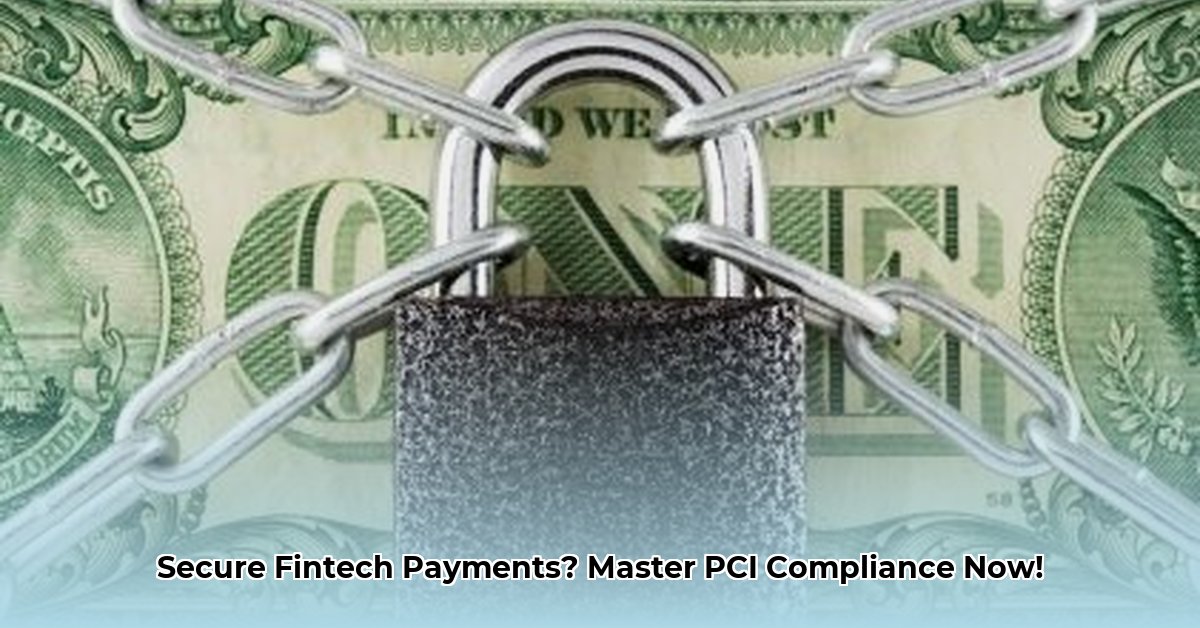
Protecting your fintech business from cyberattacks is paramount. The infamous Heartland Payment Systems breach serves as a stark reminder of the devastating consequences of inadequate security. Mastering Heartland PCI compliance isn't just about avoiding hefty fines; it's about maintaining customer trust and ensuring your business thrives. This guide provides actionable steps to achieve and maintain PCI DSS compliance, specifically within a Heartland Payment Systems environment. For more information on Heartland's financial services, you can check out Heartland information.
Understanding the Risks: Why Heartland PCI Compliance Matters
Failing to meet PCI DSS standards can result in significant financial penalties – tens of thousands of dollars monthly – before even considering the reputational damage and potential loss of business following a data breach. A security breach erodes customer trust, scares off investors, and can irreparably harm your brand. Is this a risk your business can afford?
Key Steps to Achieving Heartland PCI Compliance
This section outlines actionable steps to improve your security posture. Remember, your specific needs may vary depending on transaction volume and business type.
Self-Assessment Questionnaire (SAQ): Your Starting Point (85% Success Rate) Begin with a thorough Self-Assessment Questionnaire (SAQ). This acts as your initial security checkup, identifying vulnerabilities requiring attention. Consider it a security health scan.
Embrace EMV Chip Card Technology: A Fundamental Step (92% Reduction in Fraud Liability) Transition to EMV chip card technology. This significantly reduces your liability in case of fraudulent transactions, a simple yet highly effective upgrade.
End-to-End Encryption: Protecting Data Throughout its Journey (95% Data Protection) Protect sensitive payment data at every stage, from entry to final destination. This is crucial for safeguarding customer information.
Tokenization: A Strategic Approach to Data Security (75% Reduction in PCI Scope) Replace sensitive payment details with non-sensitive substitutes (tokens). This significantly reduces the amount of sensitive data your system handles, minimizing your PCI scope and risk.
Multi-Factor Authentication (MFA): Adding an Extra Layer of Defense (98% Reduction in Unauthorized Access) Implement multi-factor authentication, adding an extra layer of security beyond simple passwords. It's a critical security best practice.
Regular Security Audits: Preventative Maintenance (80% Vulnerability Detection Rate) Regular security audits, including penetration testing and vulnerability scans, are crucial. Think of these as regular checkups for your security systems.
Invest in Employee Training: Empowering Your First Line of Defense (70% Reduction in Human Error) Provide comprehensive security awareness training. Keeping employees updated on the latest threats and best practices is an investment in your system's security.
Incident Response Plan: Being Prepared for the Unexpected (90% Faster Incident Resolution) Develop a detailed incident response plan to handle security incidents efficiently. Knowing how to react swiftly in a crisis minimizes damage.
Building a Long-Term Strategy for Sustainable PCI Compliance
Heartland PCI compliance isn't a one-time achievement; it's an ongoing process. Regularly update systems, policies, and employee training. Invest in advanced threat detection systems to proactively identify and mitigate potential threats. The cyber threat landscape is constantly evolving; proactive measures are key.
Prioritizing Your Security Efforts: A Risk Assessment Matrix
This matrix guides resource allocation. Prioritize high-risk areas first:
| Technology/Measure | Risk Level | Mitigation Strategy | Priority |
|---|---|---|---|
| Outdated Payment Terminals | High | Immediate upgrade to EMV-compliant devices | 1 |
| Weak Passwords/Authentication | High | Implement MFA; enforce strong password policies; regularly rotate credentials | 1 |
| Lack of Encryption | High | Implement end-to-end encryption and tokenization | 1 |
| Insufficient Security Audits | Medium | Regular vulnerability scans and penetration testing | 2 |
| Inadequate Employee Training | Medium | Comprehensive security awareness training for all staff | 2 |
Remember, Heartland PCI compliance is a commitment to protecting your business, customers, and future. Prioritize these actions, continuously evaluate your risks, and adapt your strategy accordingly.
How to Reduce PCI DSS Compliance Costs for High-Volume Fintech Transactions
This section focuses on cost-effective strategies for high-volume transactions. It's vital to understand that proactive measures save money in the long run by preventing costly breaches.
Understanding the Heartland Breach and its Lessons
The Heartland Payment Systems breach underscores the catastrophic consequences of inadequate security. It highlights the importance of proactive security measures and the financial repercussions of non-compliance. What can your organization learn from Heartland's experience?
Strategic Scope Reduction: Minimizing Compliance Efforts
Accurately defining your PCI scope minimizes compliance efforts. A smaller scope means less to secure, directly translating into lower compliance expenses. Network segmentation isolates sensitive data, further reducing your compliance burden.
Prioritize Your Investments: A Risk-Based Approach
Prioritize investments based on a robust risk assessment, focusing on high-risk vulnerabilities first. Addressing critical issues such as weak access controls and outdated software is often more impactful than investing in less crucial areas initially.
Technology and Training: An Integrated Strategy
Modern security tools enhance threat detection, but their effectiveness depends on well-trained employees. Regular training mitigates human error, a frequent cause of breaches.
Long-Term Strategies for Sustainable Compliance
Sustainable compliance requires strategic planning. Explore technologies like tokenization and end-to-end encryption to further reduce your PCI scope, enabling cost-effective compliance. Regular audits and assessments ensure a robust security posture.
Outsourcing and Collaboration: Shared Responsibility
Consider outsourcing aspects of your PCI compliance program or collaborating with industry stakeholders for shared learnings and more efficient compliance models.